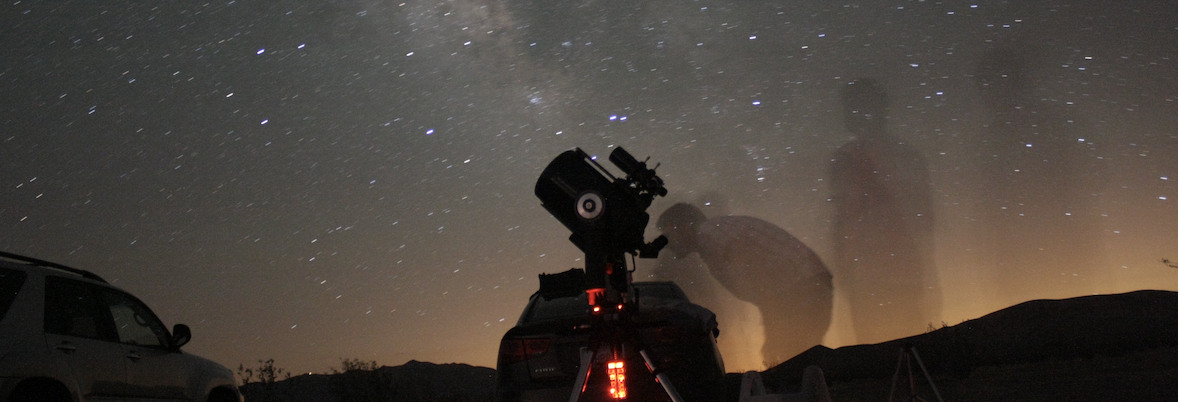Episodes

Tuesday Sep 07, 2021
September 2021
Tuesday Sep 07, 2021
Tuesday Sep 07, 2021
Observing With Webb September 2021
WATCH this on YouTube
LISTEN as a podcast on Podbean, Stitcher, or iTunes
Social Media: @mrwebbpv on Twitter and Instagram
@pvplanetarium on Facebook, Twitter, and Instagram
Three great planets all visible right after sunset, with visits from the Moon, make September of 2021 a calm, but convenient month for breaking out that telescope.
Welcome to Observing With Webb, where a high school astronomy teacher tells you what you’re looking at, why it’s so cool, and what you should check out later this month…at night.
Naked-eye PLANETS...
Sunset – Venus
- Venus (W) – Staying about 10˚ above the horizon all month, Venus is a glorious sight for those looking West after sunset.
- Saturn, Jupiter – Throughout September, Saturn and Jupiter will appear in the SE right as it gets dark. Jupiter will be the brightest point of light, with Saturn about 15˚ to the right.
Throughout the night – Saturn, Jupiter
- Saturn, Jupiter - Both gas planets rise from the SE and move S and SW throughout the night. In the beginning of the month Saturn sets at 4am, with Jupiter trailing at 5:30am. By the end of the month, Saturn and Jupiter set in the SW at about 2am and 3am, respectively.
Morning – None
EVENTS...
Morning Crescents (look East in the AM)
New Moon – 6th (darkest skies)
Evening Crescents (look West after Sunset)
First Quarter Moon – 13th (Visible until midnight)
Evening Gibbous (Mostly lit, after Sunset)
Full Moon – 20th (Visible all night)
Waning Gibbous (Mostly lit, rises later at night)
Last Quarter Moon – 28th (Visible from midnight into the morning)
9th – 10th – Close Encounter – Moon, Venus – Get out there and watch the sunset (7:22pm) and hang out until you see bright Venus with a thin crescent Moon directly to the right of it on the 9th. The following night, the Moon will move to the left and up from Venus.
15th – 19th – Close Encounter – Moon, Saturn, Jupiter – Anytime after sunset, get out there and look SE to find the Moon, Saturn, and Jupiter. On the 15th, they line up with Jupiter on the left, Saturn in the middle, and the Moon on the right. After this, the Moon passes by the two gas planets, being just below Saturn on the 16th, down and to the right of Jupiter on the 17th, and to the left of both planets on the 18th and 19th. All three move westward throughout each night, setting between 3am and 4am.
22nd– Fall Equinox – When all locations on Earth experience a day of almost exactly 12 hours and a night of almost exactly 12 hours. It is the astronomical first day of fall, even though meteorologically it typically starts in the beginning of September.
CONSTELLATIONS...
Use a sky map from www.skymaps.com to help you out.
After Dinner:
Sagittarius – Use binoculars (or even a telescope) and a star chart to scan through the southern constellation of Sagittarius. There are at least 7 easily visible clusters and nebulas up and to the right of the “teapot” of Sagittarius.
The Summer Triangle: Lyra, Cygnus, Aquila, Delphinus - Look straight up before 10pm and you’ll be able to see Lyra (the Harp), Cygnus (the Swan), Aquila (the Eagle), (and Delphinus the Dolphin.) These three constellations have the three brightest stars of the summer constellations (Vega, Deneb, Altair – respectively.) Those bright stars create the summer triangle. Off to the east of this is the small but beautiful constellation of Delphinus. If you’re under dark skies (away from city lights) you may just catch a glimpse of the Milky Way passing through Cygnus and Aquila. If you’re looking past 10pm, they’ll be moving toward the West and lower in the sky.
Before Work:
Cassiopeia – Just a few degrees below the zenith, in the North, is the Queen. Just look North and tilt your head almost all the way up, and you’ll see the 5 bright stars that form an M or upside down W in the sky, depending on what font you normally use. The angle on the left will be ALMOST a right angle, with the one on the right being obtuse.
Don’t forget this podcast is found on my Podbean page, Stitcher, and iTunes. There’s also a video version on my YouTube Channel and I can be found on Twitter and Instagram as @mrwebbpv. The Pequea Valley Planetarium and its events and updates are on Facebook, Twitter, and Instagram as @pvplanetarium.


No comments yet. Be the first to say something!